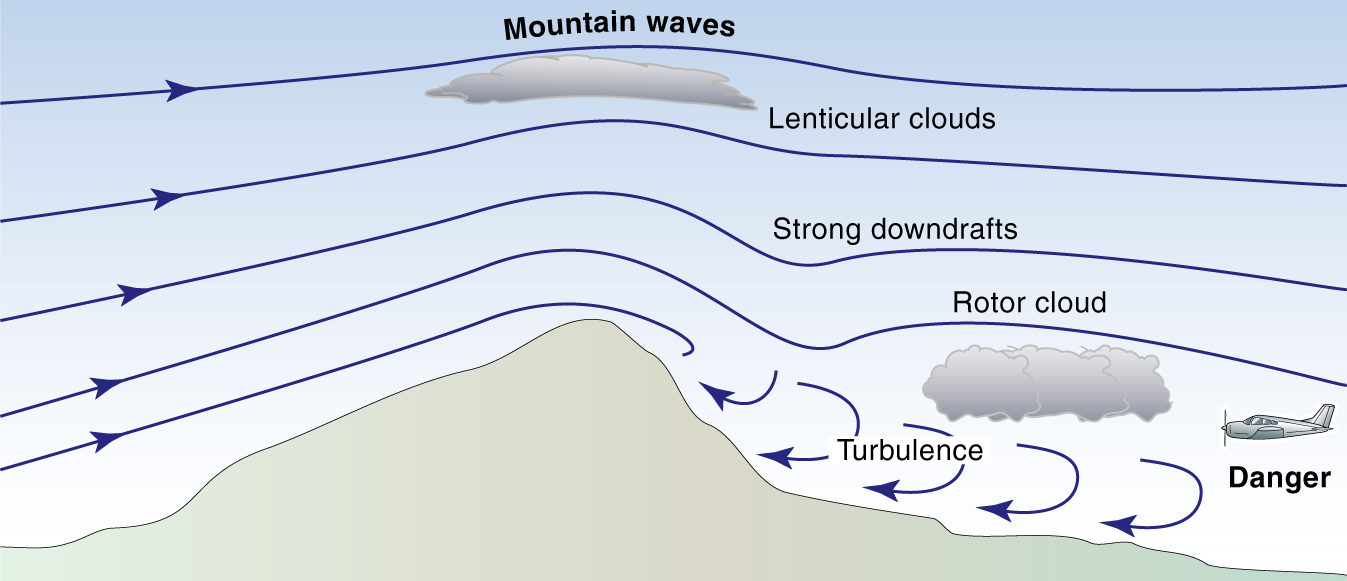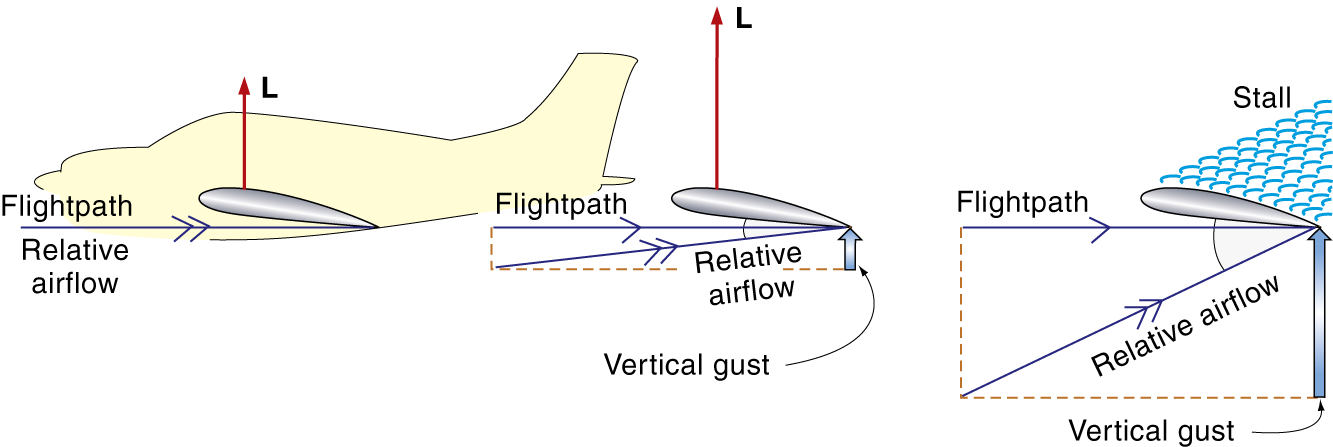This week: turbulence. Some degree of turbulence is almost always present in the atmosphere and pilots quickly become accustomed to slight turbulence. Moderate or severe turbulence, however, is uncomfortable and can even overstress the airplane. Today we’ll talk about its causes and share some best-practices when encountering turbulence. Words and pictures have been excerpted from our textbook The Pilot’s Manual Volume 2: Ground School.

Where to Find Turbulence
The surface wind may bear no resemblance to the gradient wind at 2,000 feet AGL and above if it has to blow over and around obstacles such as hills, trees, and buildings. The wind will form turbulent eddies, the size of which will depend on both the size of the obstructions and the wind strength. This is known as frictional turbulence or mechanical turbulence.
Winds that flow over a mountain and down the lee side can be hazardous to aviation, not only because the air may be turbulent, but also because an airplane flying toward the mountain from the downwind or lee side will have to “climb” into the downflowing winds even to maintain altitude. For this reason, you should maintain a vertical clearance of several thousand feet above mountainous areas in strong wind conditions. Weather phenomena associated with mountains are known as orographic effects. There may also be local wind effects near mountains, such as valley winds and the katabatic winds that flow down cool slopes at night and in the morning.

Large mountains or mountain ranges cause an effect on the wind that may extend well above ground level resulting in mountain waves, possibly with associated lenticular clouds. These clouds are continuously forming and dissipating as they stand over the mountain, and do not appear to move. This may lead you to think that there is little or no wind present—definitely not the case.The up-currents and down-currents associated with mountain waves can be quite strong, and can extend for 30 or 40 miles downwind of the mountains.
Turbulence can also be expected at high altitudes in the vicinity of any jet streams (tubes of strong wind flowing for many hundreds or thousands of miles, usually from west to east). Turbulence above 15,000 feet AGL that is not associated with cumuliform clouds is known as clear air turbulence (CAT). If there is a change in wind strength of more than about 6 knots per 1,000 feet of altitude change, then moderate or stronger clear air turbulence is likely to exist.

Flying in Turbulence
Vertical gusts increase the wing’s angle of attack, causing an increase in the lift generated at that particular airspeed and therefore an increased load factor. Of course, if the angle of attack is increased beyond the critical angle, the wing will stall; this can occur at a speed well above the published 1g stall speed (known as an accelerated stall).
The load factor (or g-force) is a measure of the stress on the airplane and each category of airplane is built to take only certain load factors. It is important that these load factors are not exceeded. One means of achieving this is to fly the airplane at the turbulence-penetration speed (VB) which is usually slower by some 10–20% than normal cruise speed, but not so slow as to allow the airplane to stall, remembering that in turbulence the airplane may stall at a higher indicated airspeed than that published. When encountering turbulence:
- fasten the seat belts;
- maintain the level flight attitude for the desired flight phase (climb, cruise or descent), using whatever aileron movements are needed to retain lateral control, but be fairly gentle on the elevator to avoid over-stressing the airframe structurally through large changes in angle of attack and lift, and be prepared to accept variations in altitude; and
- use power to maintain speed, aiming to have the airspeed fluctuate around the selected turbulence penetration speed, which may require reducing power; the airspeed indicator will probably be fluctuating and so will be less useful than normal.
It is obviously better to avoid turbulence, and to some extent this is possible. Avoid flying underneath, in or near thunderstorms where changes to airflow can be enormous. Avoid flying under large cumulus clouds because of the large updrafts that cause them. Avoid flying in the lee of hills when strong winds are blowing, since they will tumble over the ridges and possibly be quite turbulent as well as flowing down and into valleys at a rate which your airplane may not be able to out-climb. Avoid flying at a low level over rough ground when strong winds are blowing.
We’ll have more, as always, from our CFI on Thursday. Want to get the Learn to Fly Blog delivered straight to your email? Subscribe using the form at the top of the sidebar. Your information will never be shared.




